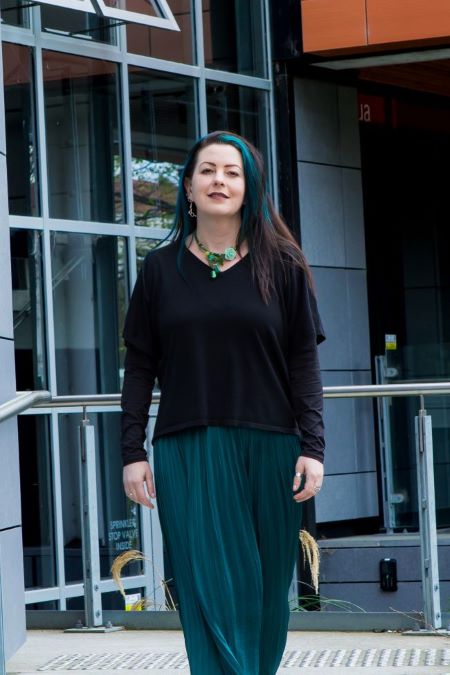From business perspective, technology company Rakon needs little introduction. proclaimed “darling” of the NZX since listing there in May 2006, Rakon recently made the Forbes Asia Annual ‘200 Best under Billion’ list, one of 200 companies selected from over 22,500 publicly listed companies across the Asia Pacific region. Companies make the list by demonstrating consistent growth of both sales and profits over three-year period, and Rakon certainly has no problem proving that.
Rakon makes and exports high performance frequency control technology based on quartz crystals and temperature compensated crystal oscillators used in global positioning satellite products including mobile phones, wireless networks and radio and microwave communications. It currently has market capitalisation of around $700 million and in May announced net profit had risen 122 percent to $10.65 million on total revenue of $106.2 million. That profit is forecast to roughly double for the next financial year, on projected revenue of around $220 million.
The global market for Rakon products is estimated at around $3 billion, and Rakon, which in 2005 was named NZ Trade & Enterprise’s Supreme Exporter of the Year, exports around 95 percent of product for around $100 million in export sales.
However, while the figures are there for all to see, what’s less obvious is how Rakon has managed the transition from being family-owned and driven company – the Robinson family still owns 34 percent – to publicly listed company with an independent board and public accountability. What lessons has management learned from challenges like the negative press it received when it was reported government grants to Rakon could have been used to develop ‘smart bomb’ parts for US military supplier Rockwell Collins – and how is Rakon coping with the culture shock of managing the Frequency Control Products division of UK company C-Mac MicroTechnology, acquired in March for $52 million?
Marketing manager Justin Maloney says the past few years have certainly been eventful and the Rakon executive management team has learned lot along the way. He says the culture of the business has obviously changed from family business to one with more formality, business structure and public accountability. And while Rakon’s decision to publicly list was driven by the owner’s realisation they couldn’t fund growth and acquire the companies they wanted to without public funding, the introduction of more formal reporting and independent board members has been bonus, says Maloney.
“We are all free to voice our opinions and contribute to the overall plan. The negative of having that much freedom is you can chew up bit of time debating things. But the payoff is much more balanced view of everything,” he says.
Rakon managers are now required to submit regular board papers which adds to workload, but delivered unforeseen pay-offs including the need for managers to look at what they are doing on regular basis and why, says Maloney. The board spends lot of time questioning, with the outside experience of independent directors deemed valuable.
“They are there to steer and guide and ask the hard questions. [Managing director] Brent Robinson has joked that board meetings in the past used to be held around the dinner table or at the pub over few beers. That was good for when the business was small and good decisions were made, but now the board has formal reporting cycle,” says Maloney.
The current Rakon board comprises three members of the Robinson family – father and founder Warren and brothers Brent and Darren, respectively managing director and executive director. Also in the mix are independent directors Bryan Mogridge and Bruce Irvine, and Navman founder Peter Maire, who owns around 20 percent of Rakon.
The executive management team reporting to this board is made up of 11 core members and 10 further managers who between them look after Rakon offices and manufacturing and distribution sites in England, France, Taiwan, China, South Korea, Malaysia, Japan and the United States
Despite this spread, Maloney says Rakon executive management view business opportunities by industry sector rather than geographic area – more than half of Rakon’s sales are in the GPS sector, with further one third in communications and around five percent in military-related industries. Adoption of GPS into mobile phones is ramping up, diversifying and increasing competition for the company.
People power
Maloney says while the majority of people in management have been with the company for more than seven years, fresh ideas introduced by new people have also been good for Rakon despite some teething problems in managing larger numbers of staff.
“We went through flat growth period some years back but saw the upturn coming and realised we needed to bring more people on. When the initial [production] ramp-up hit us though, managing higher numbers of staff and putting in place the right systems was initially tough; we tried different [management] models like the matrix model, and then went back to hierarchical,” says Maloney.
He says Rakon realised early on that due to the industry it is in, it couldn’t rely solely on salespeople to drive the business forward – innovation through forward-looking engineering is needed to keep the company out in front and ahead of competition and is why the roles of product manager and business development manager are seen as senior and business-critical positions.
“We need to be working on products up to five years in advance, so we have highly technical people on the road working with customers constantly and I have team of people looking at things from the point of view of future marketing directions. This all gets fed back to the product managers; while you are always going to make mistakes and have your lemons, if you don’t make mistakes then you don’t learn,” says Maloney.
With 800 staff worldwide, 530 of them in New Zealand, Maloney says Rakon has “average” staff turnover, which is weighted by the transience of production staff, largely immigrant-focused workforce.
“In Auckland we have production staff who are working towards residency so there is turnover as result of that. You know the doctor-driving-the-taxi scenario? We have similar thing,” says Maloney.
He says the staff turnover rate drops at management level and Rakon has initiated risk assessments to identify key knowledge holders and develop strategies aimed at retaining both knowledge and knowledge holders. As the company matures and grows it is also getting better at internal training and development of staff – something it was “very poor at” five years ago, says Maloney.
“We identified it as something we needed to improve and have really good HR team who are now very focused, along with one person solely focused on training and development.”
Lessons learned
As Rakon has grown and increased its public profile, new management challenges have emerged. One is corporate communications. Maloney says while the fundamentals don’t change, internal and external communications have become more complex in recent years and Rakon has found it needs increased PR and media relations along with advice on maintaining investor relations. “Our internal communications has also become more challenging as we become larger, more distributed organisation – staff want to feel they have been informed. Then there is traditional customer communications. If you don’t get the balance right, you end up ignoring one or more of the groups,” says Maloney.
Referring to 2005 media coverage that spotlighted and criticised government funding of Rakon against the backdrop of its supplier relationship with US military supplier Rockwell Collins, Maloney says: “Could we have done anything about [the angle] the media took? I don’t know. But Rakon had traditionally kept very low profile to avoid the people who want to knock you down. While low profile is positive beca











